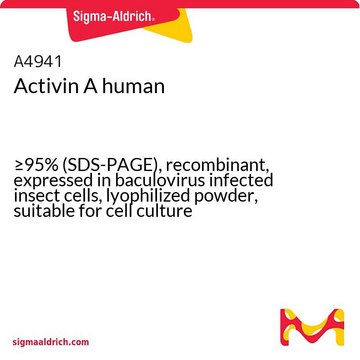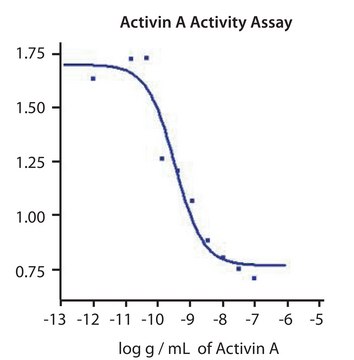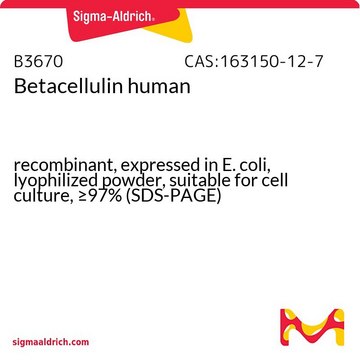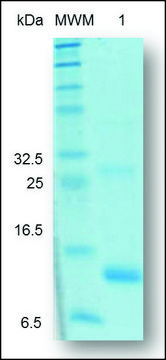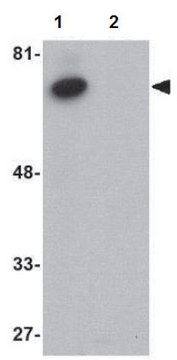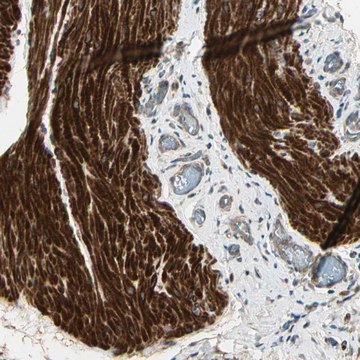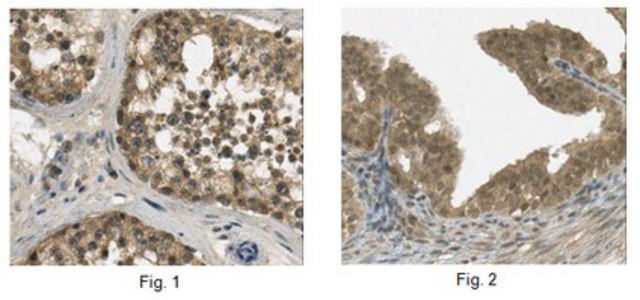SRP6057
Activin A from mouse
recombinant, expressed in E. coli, ≥95% (SDS-PAGE), ≥95% (HPLC)
Synonym(s):
FRP, FSH-releasing protein, Inhibin beta-1
About This Item
Recommended Products
biological source
mouse
recombinant
expressed in E. coli
Assay
≥95% (HPLC)
≥95% (SDS-PAGE)
form
lyophilized
mol wt
26.2 kDa
packaging
pkg of 10 μg
technique(s)
cell culture | embryo: suitable
NCBI accession no.
shipped in
wet ice
storage temp.
−20°C
Gene Information
mouse ... INHBA(3624)
General description
Application
- to induce differentiation of embryonic stem cells to pancreatic β cells
- in the induction of bone marrow-derived mesenchymal stem cells to insulin-producing cells
- to induce endoderm differentiation from human embryonic stem cells
- as a component of β cell induction medium.
Biochem/physiol Actions
Physical form
Preparation Note
Reconstitution
Other Notes
Signal Word
Warning
Hazard Statements
Precautionary Statements
Hazard Classifications
Eye Irrit. 2 - Skin Irrit. 2
Storage Class Code
11 - Combustible Solids
WGK
WGK 3
Flash Point(F)
Not applicable
Flash Point(C)
Not applicable
Regulatory Information
Choose from one of the most recent versions:
Certificates of Analysis (COA)
It looks like we've run into a problem, but you can still download Certificates of Analysis from our Documents section.
If you need assistance, please contact Customer Support.
Already Own This Product?
Find documentation for the products that you have recently purchased in the Document Library.
Our team of scientists has experience in all areas of research including Life Science, Material Science, Chemical Synthesis, Chromatography, Analytical and many others.
Contact Technical Service

